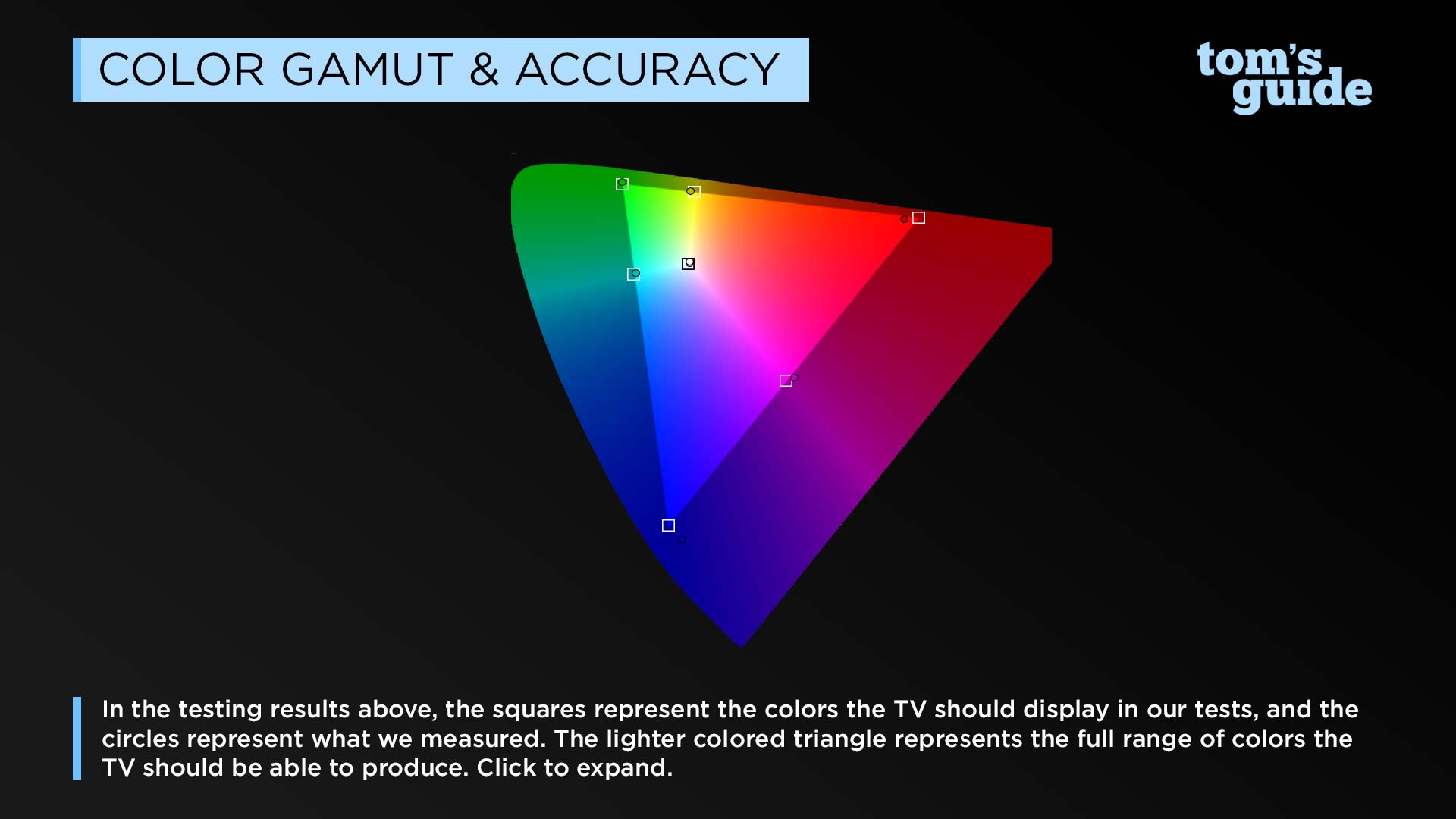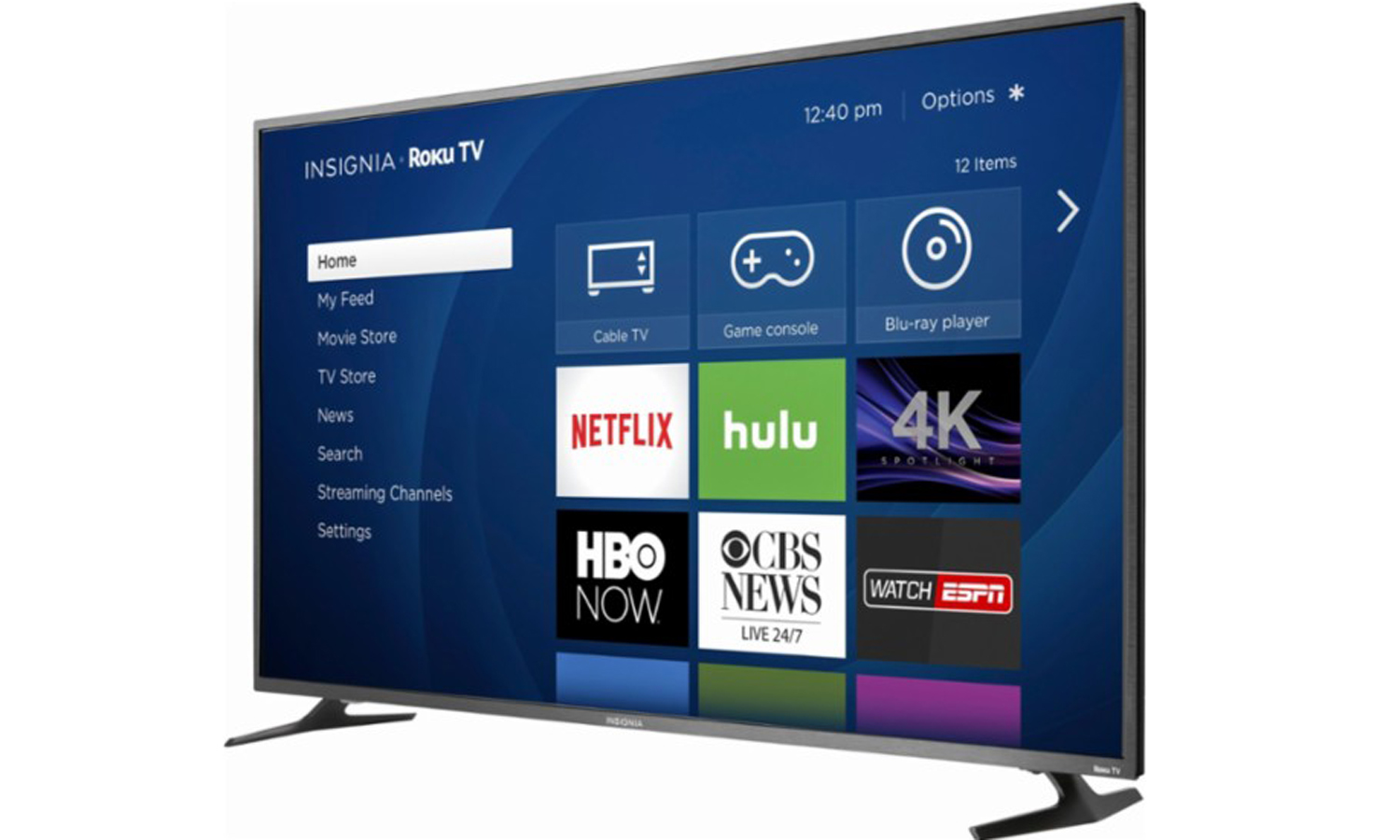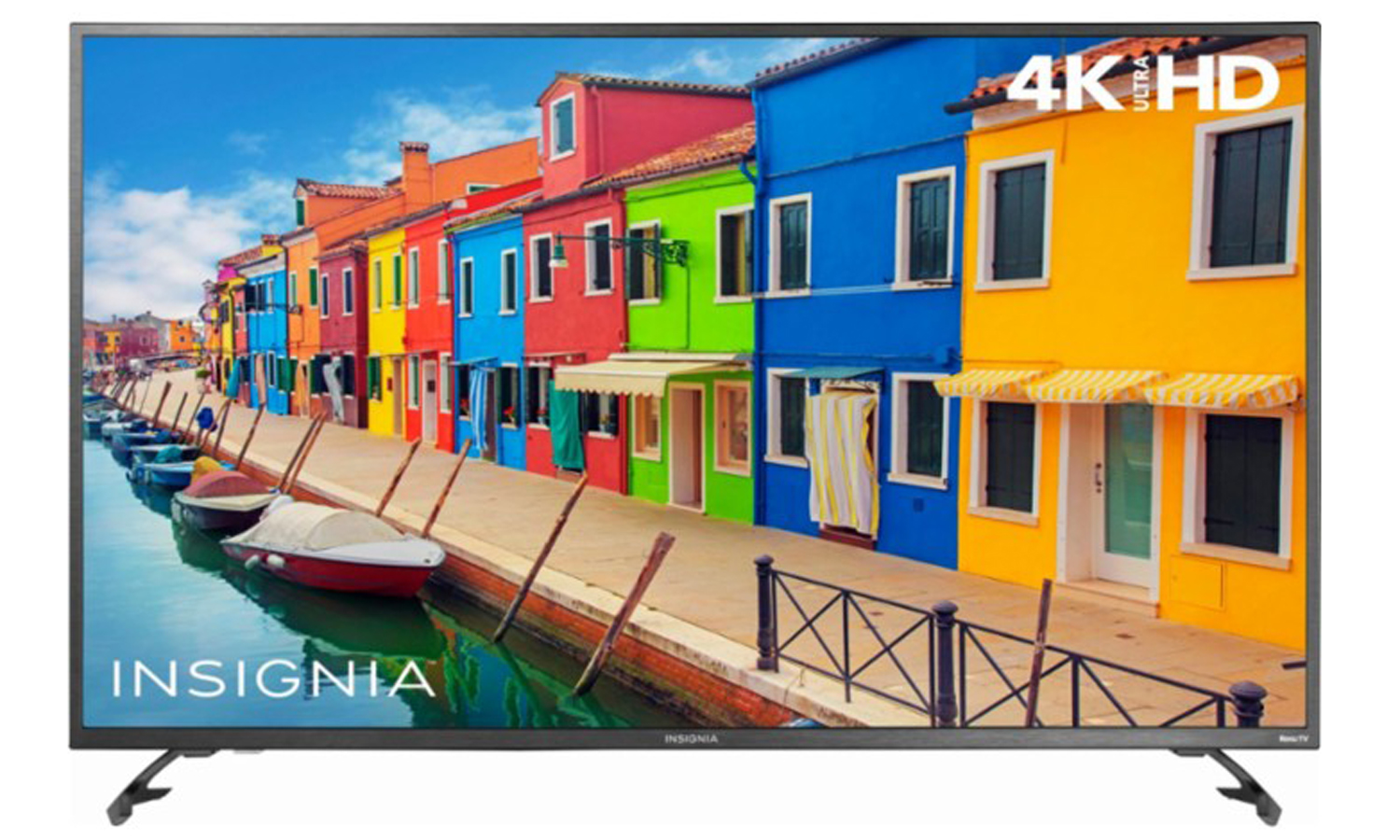Tom's Guide Verdict
As a 55-inch 4K TV for under $500, the Insignia Roku TV is a big-screened bargain. You’ll miss out on the picture quality, HDR support and premium sound of more expensive models, but it offers the best performance and features for the price.
Pros
- +
Easy-to-follow smart Roku interface
- +
Inexpensive
- +
Great brightness and accuracy for the price
Cons
- -
No HDR support
- -
Inferior sound
Why you can trust Tom's Guide
A 4K Ultra HD 55-inch TV for under $500? Yes, the highest-resolution sets are now available at bargain prices — but in the case of the Insignia Roku TV, you get only what you pay for. The Insignia moniker is Best Buy's in-house brand, so you'll find it only at that retailer. But at $449, this 55-inch LCD TV is still competitively priced compared to similar models from the likes of TCL and Westinghouse. Furthermore, if you're not accustomed to navigating the myriad features of today's smart TVs, the Roku interface is a godsend. It makes finding programs — online and off — a breeze. On the other hand, serious movie fans would do better to spend an additional $150 to get the TCL Roku set with HDR (high dynamic range) support.
Design: Straightforward approach
The Insignia Roku TV's design is generally unremarkable. It's not strikingly thin (it's 3.2 inches thick), and its brushed-metallic frame is understated (no excessive chrome touches). On the other hand, its two feet for tabletop placement do look like something off a Klingon battle cruiser.
This basic 60-Hz LCD panel uses an edge-lit LED design. It comes with the necessities for most home-theater setups. There are three HDMI ports, a USB plug, Ethernet, Wi-Fi, an RF antenna and composite video connections, all of which makes this set sufficient for cord cutters and game players alike.
Performance: Adequate for the price
The 55-inch Insignia Roku TV performed generally better than the smaller, 43-inch Westinghouse Alexa-outfitted Fire TV Edition, as well as other sub-$500 4K sets we tested. It had the second-best color accuracy (a Delta-E score of 2) and was the second-brightest, at 351 nits. It was also, at 55 inches, the largest set at this price.
However, if you step up to the next level, the Insignia TV's shortcomings become more apparent. The 55-inch TCL 4K Roku TV ($599) was brighter (464 nits versus the Insignia's 351 nits) and delivered more colors (99 percent of the Rec. 709 color gamut versus the Insignia's 96 percent). The TCL set also offers HDR support.

Without HDR support, for example, the 4K version of The Martian with the wider color support looked dull on the Insignia display alongside the TCL set (each model was set in its best Movie mode).
The limited color support also gave people's faces a grayish cast versus what we saw on more expensive Ultra HD sets from LG and Vizio; on those TVs, the same actors looked warmer or more pink. This limitation of the Insignia set tended to affect colors in other scenes, such as the cliffs in Mad Max: Fury Road, which had a yellowish hue compared to the more reddish appearance they had on other TVs.
Get instant access to breaking news, the hottest reviews, great deals and helpful tips.

There was also a loss of subtle details due to poor contrast, such as a tunnel scene in Mad Max wherein the Insignia set not only hid some picture elements in darkness but also produced some banding rather than smooth transitions between shades of color. Similar flaws were apparent in upscaled material, such as the opening interior scenes of Skyfall.
The lack of contrast was also glaringly obvious in scenes from science fiction space epics, like Gravity. Not only was there flaring along the edge of the screen as the set occasionally struggled to illuminate bright objects floating against the blackness of space, but there were also so many stars that the actors looked like they were sailing through a dust cloud.
Audio: Not a mouse, but modest
The Insignia set's built-in sound system was adequate but lacked power and intensity. And although it has various audio-effects settings — Normal, Theater, Big Bass, High Treble, Music and Speech — it delivered a relatively small sound.

In Theater mode, the Insignia set sounded much flatter and less lively than other sets. Switching to Big Bass mode produced big midrange instead; switching to Music mode emphasized vocals over instruments. The TV did deliver enough volume for a typical living room. There was no conspicuous distortion, even at 75 percent of the set's maximum volume, but there was some obvious clipping at these levels. While this protected the set's speakers, it also killed much of the dynamic range.
MORE: Best Budget Soundbars
Interface: Basic Roku
Like other models with the Roku TV interface, this Insignia TV benefits greatly from the feature. This interface makes setup dead simple (just click through it, and it will automatically update the software), although you do have to sign in to Roku to activate the TV.

Roku presents a straightforward look, with its ruby-red background and a list of options down the left side (including Home, Movie Store, News, Streaming Channels and Settings), with square icons on the right for connected devices (including a Blu-ray player, Cable, Antenna and Game Console Sources). One of the best features here is that Roku offers a lot of ways to discover new movies and programs. For example, there's a Not on Netflix category, as well as Indie Favorites, 4K Ultra HD TV Shows, Free Episodes and Binge-Worthy Categories.

What the Insignia version of Roku TV lacks compared to more expensive Roku sets like the TCL model is voice search and night-listening mode. There's no microphone built into the standard Roku remote that comes with the Insignia set, and this TV lacks the headphone jack that enables private listening.
Bottom Line
The Insignia Roku TV 4K Ultra HD TV is an example of how quickly the 4K-resolution format has made it into mainstream, inexpensive sets. However, people interested in squeezing out the most performance from their sets will probably be better-served by spending an additional $150 to get the TCL HDR version with Roku TV, which offers a better picture overall, as well as a more advanced interface. But if you want to stay under $500 and if you need a 55-inch 4K TV, the Insignia Roku TV represents the best value for your money.
John R. Quain has been reviewing and testing video and audio equipment for more than 20 years. For Tom's Guide, he has reviewed televisions, HDTV antennas, electric bikes, electric cars, as well as other outdoor equipment. He is currently a contributor to The New York Times and the CBS News television program.


